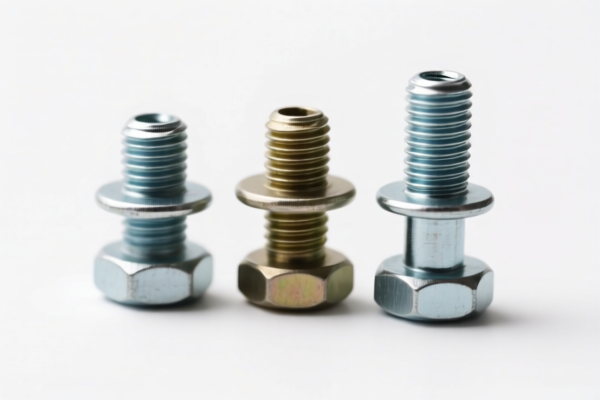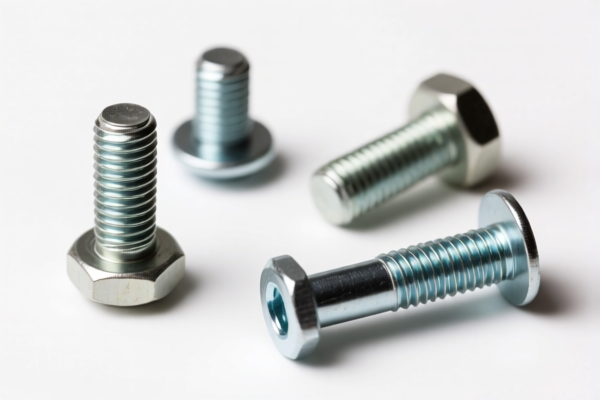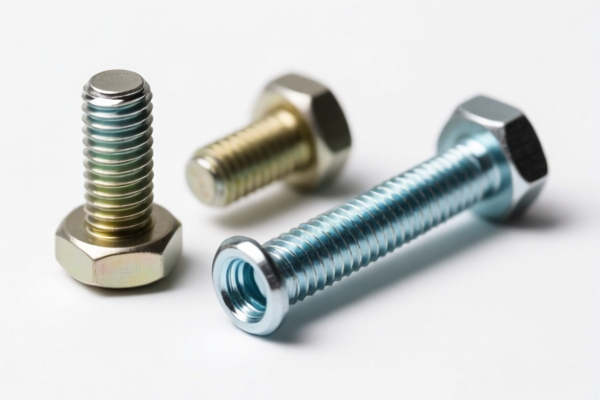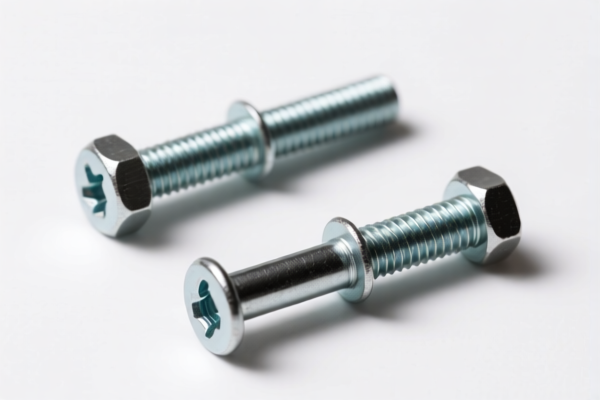| HS Code | Official Doc | Tariff Rate | Origin | Destination | Effective Date |
|---|---|---|---|---|---|
| 7326908688 | Doc | 82.9% | CN | US | 2025-05-12 |
| 8301600000 | Doc | 40.3% | CN | US | 2025-05-12 |
| 8301600000 | Doc | 40.3% | CN | US | 2025-05-12 |
| 8306100000 | Doc | 35.8% | CN | US | 2025-05-12 |
| 8306100000 | Doc | 35.8% | CN | US | 2025-05-12 |




Aluminum Alloy Fasteners
Aluminum alloy fasteners are mechanical components used to join materials together, manufactured from aluminum alloys. Their properties make them suitable for a wide range of applications where lightweight construction, corrosion resistance, and moderate strength are required.
Material
These fasteners are typically produced from alloys of aluminum with other elements such as magnesium, silicon, manganese, copper, and zinc to enhance specific characteristics. Common alloy series used include:
- 5052: Excellent corrosion resistance, good weldability, moderate strength. Frequently used in marine applications.
- 6061: Versatile alloy with good strength, weldability, and corrosion resistance. Commonly used in structural applications.
- 7075: Highest strength aluminum alloy, often used in high-stress applications. Lower corrosion resistance than other series.
The specific alloy chosen depends on the required strength, corrosion resistance, and temperature range of the application.
Purpose
The primary purpose of aluminum alloy fasteners is to provide a secure and reliable connection between two or more components. They distribute loads, prevent separation, and maintain alignment. They are often chosen as a lighter alternative to steel fasteners, reducing overall weight.
Function
Aluminum alloy fasteners function by utilizing various methods to clamp materials together:
- Shear Strength: The fastener resists forces attempting to cut it.
- Tensile Strength: The fastener resists forces attempting to pull it apart.
- Clamp Load: The force applied by the fastener to hold the materials together.
- Friction: The resistance to movement between the joined surfaces.
Usage Scenarios
These fasteners are commonly used in:
- Aerospace: Aircraft structures, due to their high strength-to-weight ratio.
- Automotive: Body panels, engine components, and interior trim.
- Marine: Boat building, docks, and other saltwater environments due to corrosion resistance.
- Construction: Architectural panels, lightweight structures.
- Electronics: Securing components in electronic devices.
- General Manufacturing: Assembly of various products where weight reduction is important.
Common Types
A variety of fastener types are available in aluminum alloy:
- Bolts: Threaded fasteners with a hexagonal or square head, typically used with a nut.
- Screws: Typically self-tapping and used to fasten materials directly. Available with various head styles (pan, flat, oval, round).
- Rivets: Permanent fasteners that create a strong, shear-resistant joint. Common types include solid rivets and blind rivets (pop rivets).
- Nuts: Used in conjunction with bolts to secure materials.
- Washers: Used to distribute load, protect surfaces, and provide consistent clamping force.
- Studs: Threaded rods used for attaching components, often used in high-stress applications.
- Self-tapping screws: Designed to create their own threads as they are driven into the material.
Considerations
- Corrosion: While aluminum alloys offer good corrosion resistance, they can still corrode in certain environments, especially when in contact with dissimilar metals.
- Strength: Aluminum alloy fasteners generally have lower strength than steel fasteners.
- Galvanic Corrosion: Avoid using aluminum alloy fasteners with steel in direct contact, particularly in wet environments, to prevent galvanic corrosion.
- Thread Lubrication: Using appropriate thread lubricants can improve installation and prevent galling.
- Anodizing: Anodizing can increase corrosion resistance and provide a protective coating.
Aluminum alloy fasteners can encompass a variety of products depending on their specific characteristics. Based on the provided information, the following HS codes may be relevant:
- 7616101000: This code covers “Other articles of aluminum: Nails, tacks, staples (other than those of heading 8305), screws, bolts, nuts, screw hooks, rivets, cotters, cotter pins, washers and similar articles: Nails, tacks and staples”. This would apply if the fasteners are in the form of nails, tacks, or staples made of aluminum alloy. The total tax rate is 60.7%, comprised of a 5.7% base tariff, a 25.0% additional tariff, and a 30% additional tariff effective April 2, 2025.
- 7616107030: This code covers “Other articles of aluminum: Nails, tacks, staples (other than those of heading 8305), screws, bolts, nuts, screw hooks, rivets, cotters, cotter pins, washers and similar articles: Other: Having shanks, threads or holes over 6 mm in diameter Threaded fasteners”. This applies to aluminum alloy fasteners that are threaded and have a shank, thread, or hole diameter exceeding 6 mm. The total tax rate is 60.5%, consisting of a 5.5% base tariff, a 25.0% additional tariff, and a 30% additional tariff effective April 2, 2025.
- 7604295020: This code covers “Aluminum bars, rods and profiles: Of aluminum alloys: Other: Bars and rods: Other High-strength heat-treatable alloys of a kind described in statistical note 6 to this chapter”. If the fasteners are manufactured from aluminum alloy bars or rods and are classified as high-strength heat-treatable alloys (as defined in statistical note 6), this code may be applicable. The total tax rate is 33.0%, comprised of a 3.0% base tariff and a 30% additional tariff effective April 2, 2025.
- 7604295050: This code covers “Aluminum bars, rods and profiles: Of aluminum alloys: Other: Bars and rods: Other Heat-treatable industrial alloys of a kind described in statistical note 7 to this chapter”. If the fasteners are manufactured from aluminum alloy bars or rods and are classified as heat-treatable industrial alloys (as defined in statistical note 7), this code may be applicable. The total tax rate is 33.0%, comprised of a 3.0% base tariff and a 30% additional tariff effective April 2, 2025.
It is important to note that the specific alloy composition and manufacturing process will determine the correct HS code.
Regarding HS codes 7604295020 and 7604295050, please note the need to verify the alloy type and confirm whether it falls under the descriptions in statistical note 6 or 7.
Customer Reviews
I found the explanation of the 5% tariff rate and the HS code for plastic builder’s doors to be extremely helpful. Perfect for my business needs.
The content was informative and covered the key points about HS Code 3925. I wish there was a downloadable version for easy reference.
The page gave me a clear idea of the tariff rate 5% for plastic doors. It would be great to see more countries covered too.
This page was a lifesaver for my export documentation. The HS code info was accurate and the trade details were spot on.
I was looking for HS code details for exporting to the US, and this page had exactly what I needed. Very well organized.